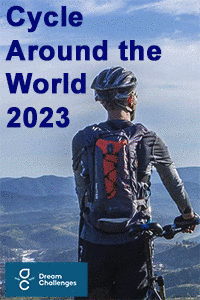Positive Health Online
Your Country

Research: REES and COLLEAGUES,
Listed in Issue 307
Abstract
REES and COLLEAGUES, (1)Clinical Trials Unit, Warwick Medical School, University of Warwick, Coventry, UK; (2)Freelance Systematic Reviewer, Winchester, UK; (3)Division of Health Sciences, Warwick Medical School, University of Warwick, Coventry, UK; (4)Institute of Applied Health, University of Birmingham, Birmingham, UK; (5) RTI Health Solutions, Manchester, UK; (6)University of Exeter, Exeter, UK sought to determine the effectiveness of meditation, primarily mindfulness-based interventions (MBIs) and transcendental meditation (TM), for the primary and secondary prevention of cardiovascular disease (CVD) and included randomised controlled trials (RCTs) of 12 weeks or more in adults at high risk of CVD and those with established CVD
Background
Interventions incorporating meditation to address stress, anxiety, and depression, and improve self-management, are becoming popular for many health conditions. Stress is a risk factor for cardiovascular disease (CVD) and clusters with other modifiable behavioural risk factors, such as smoking. Meditation may therefore be a useful CVD prevention strategy.
Methodology
Objectives: To determine the effectiveness of meditation, primarily mindfulness-based interventions (MBIs) and transcendental meditation (TM), for the primary and secondary prevention of CVD. Search Methods: We searched CENTRAL, MEDLINE, Embase, three other databases, and two trials registers on 14 November 2021, together with reference checking, citation searching, and contact with study authors to identify additional studies. Selection Criteria: We included randomised controlled trials (RCTs) of 12 weeks or more in adults at high risk of CVD and those with established CVD. We explored four comparisons: MBIs versus active comparators (alternative interventions); MBIs versus non-active comparators (no intervention, wait list, usual care); TM versus active comparators; TM versus non-active comparators. Data Collection And Analysis: We used standard Cochrane methods. Our primary outcomes were CVD clinical events (e.g. cardiovascular mortality), blood pressure, measures of psychological distress and well-being, and adverse events. Secondary outcomes included other CVD risk factors (e.g. blood lipid levels), quality of life, and coping abilities. We used GRADE to assess the certainty of evidence.
Results
We included 81 RCTs (6971 participants), with most studies at unclear risk of bias. MBIs versus active comparators (29 RCTs, 2883 participants) Systolic (SBP) and diastolic (DBP) blood pressure were reported in six trials (388 participants) where heterogeneity was considerable (SBP: MD -6.08 mmHg, 95% CI -12.79 to 0.63, I2 = 88%; DBP: MD -5.18 mmHg, 95% CI -10.65 to 0.29, I2 = 91%; both outcomes based on low-certainty evidence). There was little or no effect of MBIs on anxiety (SMD -0.06 units, 95% CI -0.25 to 0.13; I2 = 0%; 9 trials, 438 participants; moderate-certainty evidence), or depression (SMD 0.08 units, 95% CI -0.08 to 0.24; I2 = 0%; 11 trials, 595 participants; moderate-certainty evidence). Perceived stress was reduced with MBIs (SMD -0.24 units, 95% CI -0.45 to -0.03; I2 = 0%; P = 0.03; 6 trials, 357 participants; moderate-certainty evidence). There was little to no effect on well-being (SMD -0.18 units, 95% CI -0.67 to 0.32; 1 trial, 63 participants; low-certainty evidence). There was little to no effect on smoking cessation (RR 1.45, 95% CI 0.78 to 2.68; I2 = 79%; 6 trials, 1087 participants; low-certainty evidence). None of the trials reported CVD clinical events or adverse events. MBIs versus non-active comparators (38 RCTs, 2905 participants) Clinical events were reported in one trial (110 participants), providing very low-certainty evidence (RR 0.94, 95% CI 0.37 to 2.42). SBP and DBP were reduced in nine trials (379 participants) but heterogeneity was substantial (SBP: MD -6.62 mmHg, 95% CI -13.15 to -0.1, I2 = 87%; DBP: MD -3.35 mmHg, 95% CI -5.86 to -0.85, I2 = 61%; both outcomes based on low-certainty evidence). There was low-certainty evidence of reductions in anxiety (SMD -0.78 units, 95% CI -1.09 to -0.41; I2 = 61%; 9 trials, 533 participants; low-certainty evidence), depression (SMD -0.66 units, 95% CI -0.91 to -0.41; I2 = 67%; 15 trials, 912 participants; low-certainty evidence) and perceived stress (SMD -0.59 units, 95% CI -0.89 to -0.29; I2 = 70%; 11 trials, 708 participants; low-certainty evidence) but heterogeneity was substantial. Well-being increased (SMD 0.5 units, 95% CI 0.09 to 0.91; I2 = 47%; 2 trials, 198 participants; moderate-certainty evidence). There was little to no effect on smoking cessation (RR 1.36, 95% CI 0.86 to 2.13; I2 = 0%; 2 trials, 453 participants; low-certainty evidence). One small study (18 participants) reported two adverse events in the MBI group, which were not regarded as serious by the study investigators (RR 5.0, 95% CI 0.27 to 91.52; low-certainty evidence). No subgroup effects were seen for SBP, DBP, anxiety, depression, or perceived stress by primary and secondary prevention. TM versus active comparators (8 RCTs, 830 participants) Clinical events were reported in one trial (201 participants) based on low-certainty evidence (RR 0.91, 95% CI 0.56 to 1.49). SBP was reduced (MD -2.33 mmHg, 95% CI -3.99 to -0.68; I2 = 2%; 8 trials, 774 participants; moderate-certainty evidence), with an uncertain effect on DBP (MD -1.15 mmHg, 95% CI -2.85 to 0.55; I2 = 53%; low-certainty evidence). There was little or no effect on anxiety (SMD 0.06 units, 95% CI -0.22 to 0.33; I2 = 0%; 3 trials, 200 participants; low-certainty evidence), depression (SMD -0.12 units, 95% CI -0.31 to 0.07; I2 = 0%; 5 trials, 421 participants; moderate-certainty evidence), or perceived stress (SMD 0.04 units, 95% CI -0.49 to 0.57; I2 = 70%; 3 trials, 194 participants; very low-certainty evidence). None of the trials reported adverse events or smoking rates. No subgroup effects were seen for SBP or DBP by primary and secondary prevention. TM versus non-active comparators (2 RCTs, 186 participants) Two trials (139 participants) reported blood pressure, where reductions were seen in SBP (MD -6.34 mmHg, 95% CI -9.86 to -2.81; I2 = 0%; low-certainty evidence) and DBP (MD -5.13 mmHg, 95% CI -9.07 to -1.19; I2 = 18%; very low-certainty evidence). One trial (112 participants) reported anxiety and depression and found reductions in both (anxiety SMD -0.71 units, 95% CI -1.09 to -0.32; depression SMD -0.48 units, 95% CI -0.86 to -0.11; low-certainty evidence). None of the trials reported CVD clinical events, adverse events, or smoking rates.
Conclusion
CONCLUSIONS: Despite the large number of studies included in the review, heterogeneity was substantial for many of the outcomes, which reduced the certainty of our findings. We attempted to address this by presenting four main comparisons of MBIs or TM versus active or inactive comparators, and by subgroup analyses according to primary or secondary prevention, where there were sufficient studies. The majority of studies were small and there was unclear risk of bias for most domains. Overall, we found very little information on the effects of meditation on CVD clinical endpoints, and limited information on blood pressure and psychological outcomes, for people at risk of or with established CVD. This is a very active area of research as shown by the large number of ongoing studies, with some having been completed at the time of writing this review. The status of all ongoing studies will be formally assessed and incorporated in further updates. Conflict of interest statement: Conflict of Interest A.P.-L. is listed as an inventor on several issued and pending patents on the real-time integration of transcranial magnetic stimulation with electroencephalography and magnetic resonance imaging, and applications of non-invasive brain stimulation in various neurological disorders; as well as digital biomarkers of cognition and digital assessments for early diagnosis of dementia. He is a co-founder of Linus Health and TI Solutions AG and serves on the scientific advisory boards for Starlab Neuroscience, Magstim Inc., MedRhythms, TetraNeuron, and Skin2Neuron. None of these companies have any interest in or have contributed to the present work. The remaining authors declare that they have no competing interests.
References
Rees K(1), Takeda A(2), Court R(3), Kudrna L(4), Hartley L(5), Ernst E(6). Meditation for the primary and secondary prevention of cardiovascular disease. Cochrane Database Syst Rev. ;2(2):CD013358. DOI: 10.1002/14651858.CD013358.pub2 . 15 Feb 2024. Update of https://doi.org/10.1002/14651858.CD013358
Comment
Despite the large extent of the studies including in the above research, the results were not totally clear-cut regarding the clinical effects of mindfulness-based interventions upon cardiovascular disease (CVD) clinical parameters, thus mandating the importance of further research.



